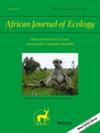Dung Beetles, Shifting Landscapes and the Ecology of Excrement in Southern Africa's Savannahs
Abstract
Scarabids communities (dung beetles) perform critical services in savannah ecosystems including nutrient cycling and soil enrichment but studies that investigate their feeding ecology are still limited. This study aimed to determine the diversity of scarab beetles as well as investigating their associations with vegetation and dung types in Mana Pools National Park, Zimbabwe. Dung traps were used to sample the beetles using three types of dung baits (elephant, buffalo and human) in five vegetation types (mopane, riverine, jesse, miombo and the floodplain) during different times of the day (mornings and afternoons). A total of 52 scarab beetle species were identified during the study period with Kurtops signatus and Neosisyphus calcaratus being the most numerous. The riverine and mopane had the highest scarab beetle abundance and diversity respectively. The elephant dung had the highest beetle numbers but the highest scarab beetle diversity was observed on human faeces. The Euonthophagus vicarius was positively associated with miombo vegetation; Onitis viridulus with riverine vegetation and Sisyphus impressipennis with jesse vegetation. The observed non-random niche overlap suggests that scarab beetle assemblages are structured by deterministic ecological processes rather than stochastic dispersal alone. These results also suggest that dung beetle species preferentially utilise forage resources and that changes in composition of animals in the protected areas may affect their diversity. The projected climatic changes, changes in vegetation and herbivore distribution may also disrupt the services provided by the scarabids.

 求助内容:
求助内容: 应助结果提醒方式:
应助结果提醒方式:


